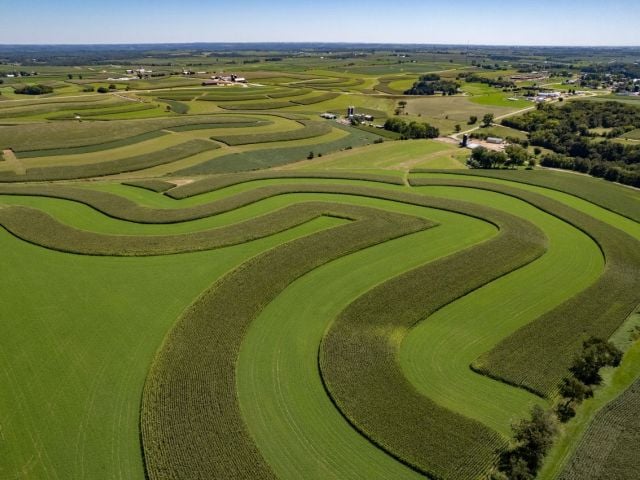MINNEAPOLIS – Between 2018 and 2020, Agriculture Department programs paid farmers $91.6 billion for crop price decreases and other challenges, with similar program qualifications allowing some farmers to get paid up to three times for the same crop price drop, a new Environmental Working Group analysis of USDA data finds.
“Over this three-year period, farmers reaped a bounty in taxpayer dollars, with multiple USDA programs compensating them for the same crop price drop,” said EWG Midwest Director Anne Schechinger, an agricultural economist, who wrote the analysis. “And now, in a blatant cash grab, farm groups are disingenuously calling on Congress for even more subsidies – after years of record-high payments.”
The payments came from five USDA programs, grouped into three categories, each of which allowed farmers to be paid for the same loss: the Crop Insurance Program ($26.6 billion), two traditional commodity subsidy programs ($11 billion combined), and two ad hoc programs created by the Trump administration: one to offset the effects of the then-president’s trade war with China, and one the effects of the Covid-19 pandemic ($53.9 billion combined).
Most farm subsidy and crop insurance payments go to just a handful of commodity crops, like corn and soybeans. In the U.S., these two crops are mostly grown not for humans to eat but instead to produce ethanol, animal feed and high-fructose corn syrup.
In large part because of the unprecedented Trump giveaways that spanned the three years covered by the analysis, total payments from the five programs more than doubled between 2018 and 2020, from almost $18.6 billion to over $41.6 billion.
More than half of all payments – $46.4 billion – went to just eight farm states, in rank order: Texas, Iowa, Illinois, Minnesota, North Dakota, Kansas, South Dakota and Nebraska. Four of the top five counties that received the highest payments were in California.
It is not possible to determine how many farmers have taken advantage of the triple-dipping opportunity, because of how the USDA makes payment data publicly available.
In 2017, EWG spotlighted through its “double dipping” report how farmers can get paid twice for the same decrease in crop prices, through the taxpayer-subsidized Crop Insurance Program and one of the two traditional commodity subsidy programs, Agriculture Risk Coverage and Price Loss Coverage, or PLC.
In addition to President Donald Trump’s ad hoc subsidy programs, the Market Facilitation Program, or MFP, in 2018 and 2019 and the Coronavirus Food Assistance Program in 2020, a third type of program has been added that made additional payments for the same crop price decreases.
EWG’s Farm Subsidy Database shows that a small number of the participants in these programs who receive payments get the bulk of the money – for example, almost 60 percent of Trump’s MFP payments went to just 10 percent of recipients, and 76 percent of PLC funds went to just 10 percent of recipients.
Because of how subsidy and crop insurance programs are structured, the largest, wealthiest farms – not small, struggling operations – get the most assistance from the federal government.
“Farmers are, on average, wealthier than the average American, and the wealthiest farms are getting the most subsidies,” Schechinger said. “Put simply, farm subsidies often serve as an inherently unfair transfer of wealth from lower-income taxpayers to higher-income famers or landowners.”
EWG has long tracked USDA program spending through its Farm Subsidy Database and Conservation Database. Most of these funds are appropriated through the Farm Bill, an enormous piece of federal legislation that is passed about every five years.
As members of Congress begin to craft the next Farm Bill, EWG’s analysis recommends they remedy repeat payments for the same crop price decreases.
Congress should reform the Crop Insurance Program to consider, when subsidizing crop insurance premiums, whether farmers have received other federal farm payments. Congress should also reject calls for more subsidies from agriculture groups, especially since crop prices are currently very high.
###
The Environmental Working Group is a nonprofit, non-partisan organization that empowers people to live healthier lives in a healthier environment. Through research, advocacy and unique education tools, EWG drives consumer choice and civic action. Visit www.ewg.org for more information.



